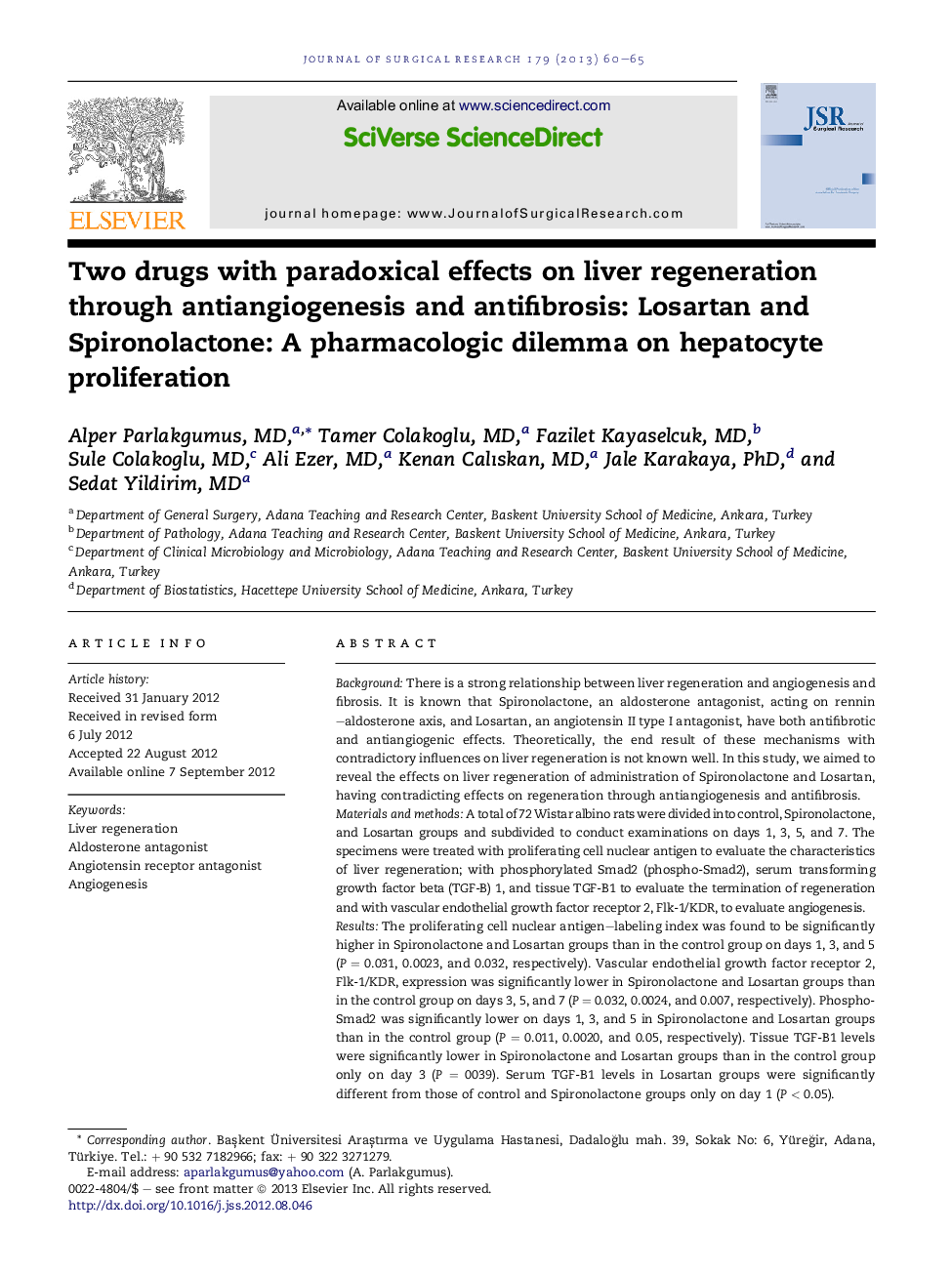| کد مقاله | کد نشریه | سال انتشار | مقاله انگلیسی | نسخه تمام متن |
|---|---|---|---|---|
| 4301110 | 1288432 | 2013 | 6 صفحه PDF | دانلود رایگان |

BackgroundThere is a strong relationship between liver regeneration and angiogenesis and fibrosis. It is known that Spironolactone, an aldosterone antagonist, acting on rennin–aldosterone axis, and Losartan, an angiotensin II type I antagonist, have both antifibrotic and antiangiogenic effects. Theoretically, the end result of these mechanisms with contradictory influences on liver regeneration is not known well. In this study, we aimed to reveal the effects on liver regeneration of administration of Spironolactone and Losartan, having contradicting effects on regeneration through antiangiogenesis and antifibrosis.Materials and methodsA total of 72 Wistar albino rats were divided into control, Spironolactone, and Losartan groups and subdivided to conduct examinations on days 1, 3, 5, and 7. The specimens were treated with proliferating cell nuclear antigen to evaluate the characteristics of liver regeneration; with phosphorylated Smad2 (phospho-Smad2), serum transforming growth factor beta (TGF-B) 1, and tissue TGF-B1 to evaluate the termination of regeneration and with vascular endothelial growth factor receptor 2, Flk-1/KDR, to evaluate angiogenesis.ResultsThe proliferating cell nuclear antigen–labeling index was found to be significantly higher in Spironolactone and Losartan groups than in the control group on days 1, 3, and 5 (P = 0.031, 0.0023, and 0.032, respectively). Vascular endothelial growth factor receptor 2, Flk-1/KDR, expression was significantly lower in Spironolactone and Losartan groups than in the control group on days 3, 5, and 7 (P = 0.032, 0.0024, and 0.007, respectively). Phospho-Smad2 was significantly lower on days 1, 3, and 5 in Spironolactone and Losartan groups than in the control group (P = 0.011, 0.0020, and 0.05, respectively). Tissue TGF-B1 levels were significantly lower in Spironolactone and Losartan groups than in the control group only on day 3 (P = 0039). Serum TGF-B1 levels in Losartan groups were significantly different from those of control and Spironolactone groups only on day 1 (P < 0.05).ConclusionsLiver regeneration, expected to decrease on day 3, was prolonged and increased even on day 5 despite antiangiogenic effects of Losartan and Spironolactone, which in fact inhibit fibrosis through phospho-Smad2 and increase regeneration. In addition, serum and tissue TGF-B1 levels are not sensitive enough to show active TGF-B1 for the evaluation of regeneration.
Journal: Journal of Surgical Research - Volume 179, Issue 1, January 2013, Pages 60–65